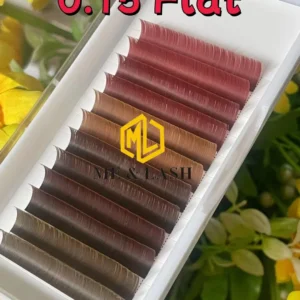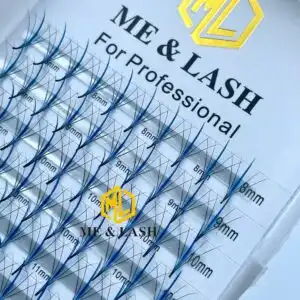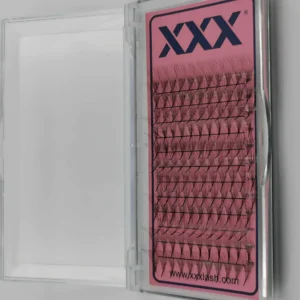History of Eyelash Extensions
Eyelash extensions are a great way to attract attention and refresh your look. The modern method of creating an “additional frame” for beautiful eyes is now in use. The history of the emergence and spread of this beauty-enhancing method is quite interesting.
Who Invented Eyelash Extensions and When?
Eyelash extensions are related to the advent of cinema. In its early days, cinema was silent. At that time, the expressiveness of actors’ faces was particularly important. Therefore, special emphasis was placed on the “windows to the soul” of the characters on the screen. A makeup artist named Max Factor, who worked in Hollywood, invented false eyelashes in 1927.
This eye-enhancing technique was first tested on actress Phyllis Haver, who played the role of Roxy in the film adaptation of the musical Chicago. Audiences were truly captivated by the beauty’s demeanor, as she fluttered her long, black-and-white eyelashes in a highly expressive way.
These “coverings” were created using the thinnest edges of thread glued to the eyelids. However, this technology did not become popular among the general public. Up close, the false eyelashes looked unnatural. In addition, they lasted for a short time and were expensive. Therefore, creating looks with such structures did not go beyond film sets until the early 1950s.
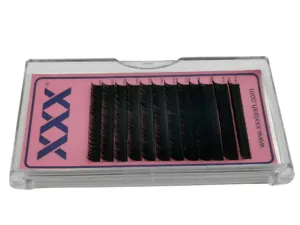
Stages of Technological Development
The truly popular eyelash extension procedure began precisely in the 1950s. The technology became simpler and cheaper, and the “decorations” themselves looked more natural—long and fluffy. More modern materials (such as plastic) were now used instead of fabric edges. Thus, not only movie stars but also ordinary women could show off such beauty. The real boom in incredible lash lengths fell in the 1960s. In the 1970s and beyond, the trend faded and reappeared in the 1990s.
At the beginning of the 21st century, another technological breakthrough took extensions to a new level. Japanese makeup artists first proposed the procedure of gluing eyelashes in clusters. Only 3 years later, a system came into play where individual artificial lashes were applied to the natural hairs above one’s eyes. Like real lashes, they are thicker at the base and thinner at the tips.
The lash frame looks very natural and spectacular because the top elements have a beautiful curve that gives the eyes a special charm. The cluster gluing technique is suitable for those with no difference in the density of their natural lashes. If there is no such issue, you can use eyelash glue.
It is no coincidence that Japanese makeup artists became trendsetters in this field. Japanese women’s natural lashes are usually half as thick as those of natives in European countries. Using extensions solved many problems, first and foremost with mascara, which unlike “spare lashes,” sometimes runs and requires removal and reapplication.
Thanks to the “long-lasting design,” you can maintain beauty day and night. It is important that the lash artist is a true professional. Only a steady, experienced hand can make the transition between the natural lashes and the extensions invisible.
Current Options for Eyelash Extension Makeup
At the current stage of the development of extension technology, there are the following options for creating makeup with eyelash glue:
- Silk
- Mink
- Chinchilla
- Squirrel
- Sable, etc.
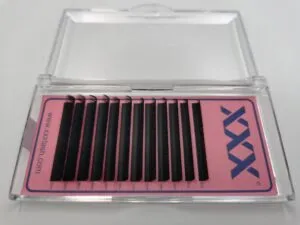
Despite mentioning the names of most animals, natural fur is not used—its use is excluded because it can cause allergic reactions. In fact, synthetic materials are used here to create a certain visual effect. Artificial lashes come in different lengths (from 6 to 15 millimeters) and diameters ranging from 0.25 to 0.1 millimeters. Not only the length but also the growth direction of the false lashes can correct the shape of the eyes and even the expression of the gaze. With such makeup, you can give it a somewhat “childlike” or mysterious feel.
Silk extensions are more suitable for daily use. Usually, the natural lashes around your eyes are supplemented with short fibers made of appropriate materials, which look and feel the same as natural hair. Thus, the “fluffiness” around the eyes is increased. You can use silk lashes up to 1.5 centimeters long, but they are not as long-lasting as shorter ones and are most often used for festive occasions or memorable photos.
To create a certain effect, artificial hairs in black, dark brown, and even purple are used. A truly voluminous effect can be created with mink extensions. In this case, your natural lashes should be thick and strong. After the procedure, a particularly long, shiny, and fluffy framing effect is produced, which is not affected by moisture or high temperatures.
The latest advancement in eyelash extensions includes 3D lash technology. In this case, the latest materials are used, which are almost identical to natural human hair. Thanks to its use, the lash edges are waterproof, sweatproof, and tearproof. Such lashes are slightly thicker than natural ones, so after gluing them, the appearance becomes deeper and more expressive.







